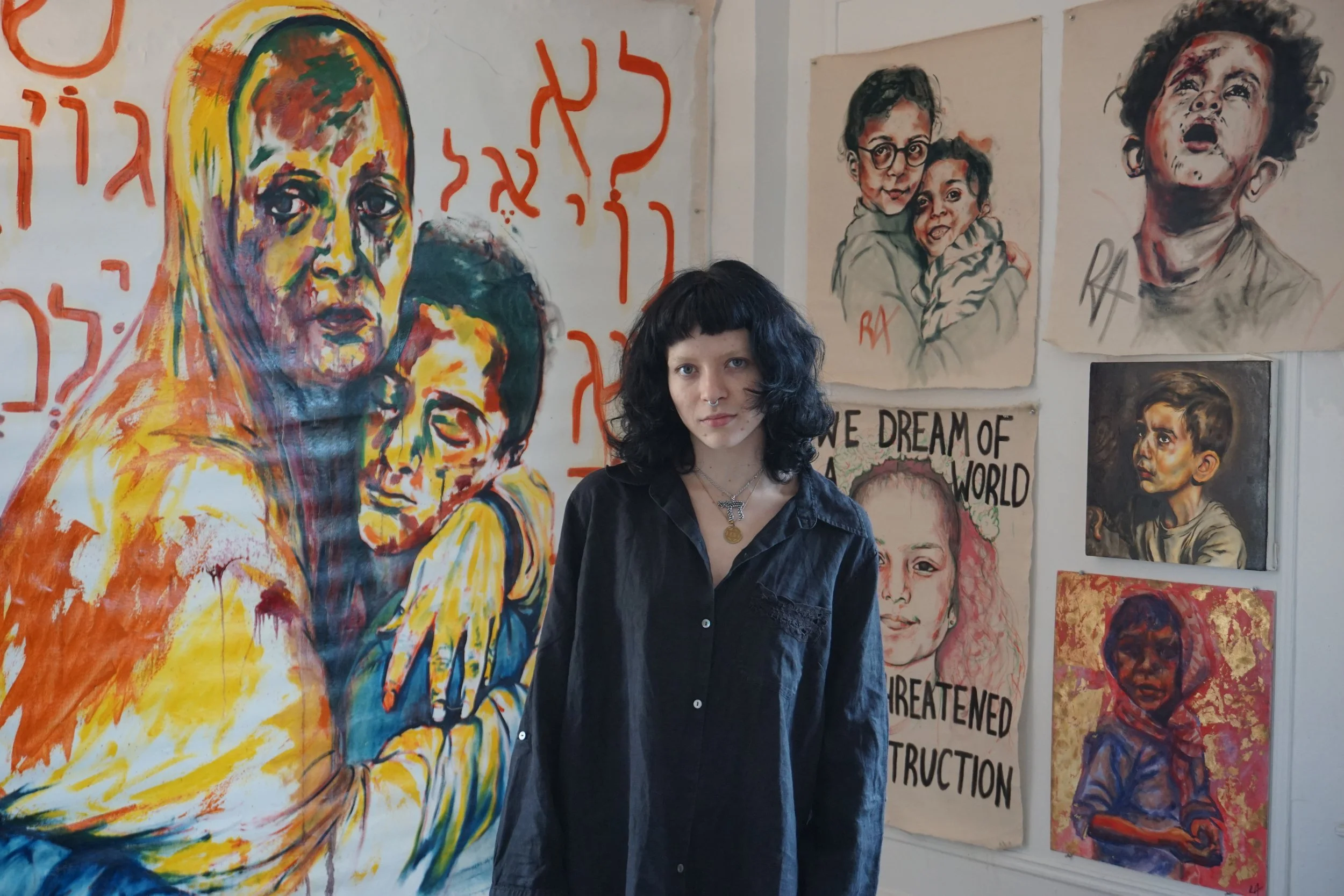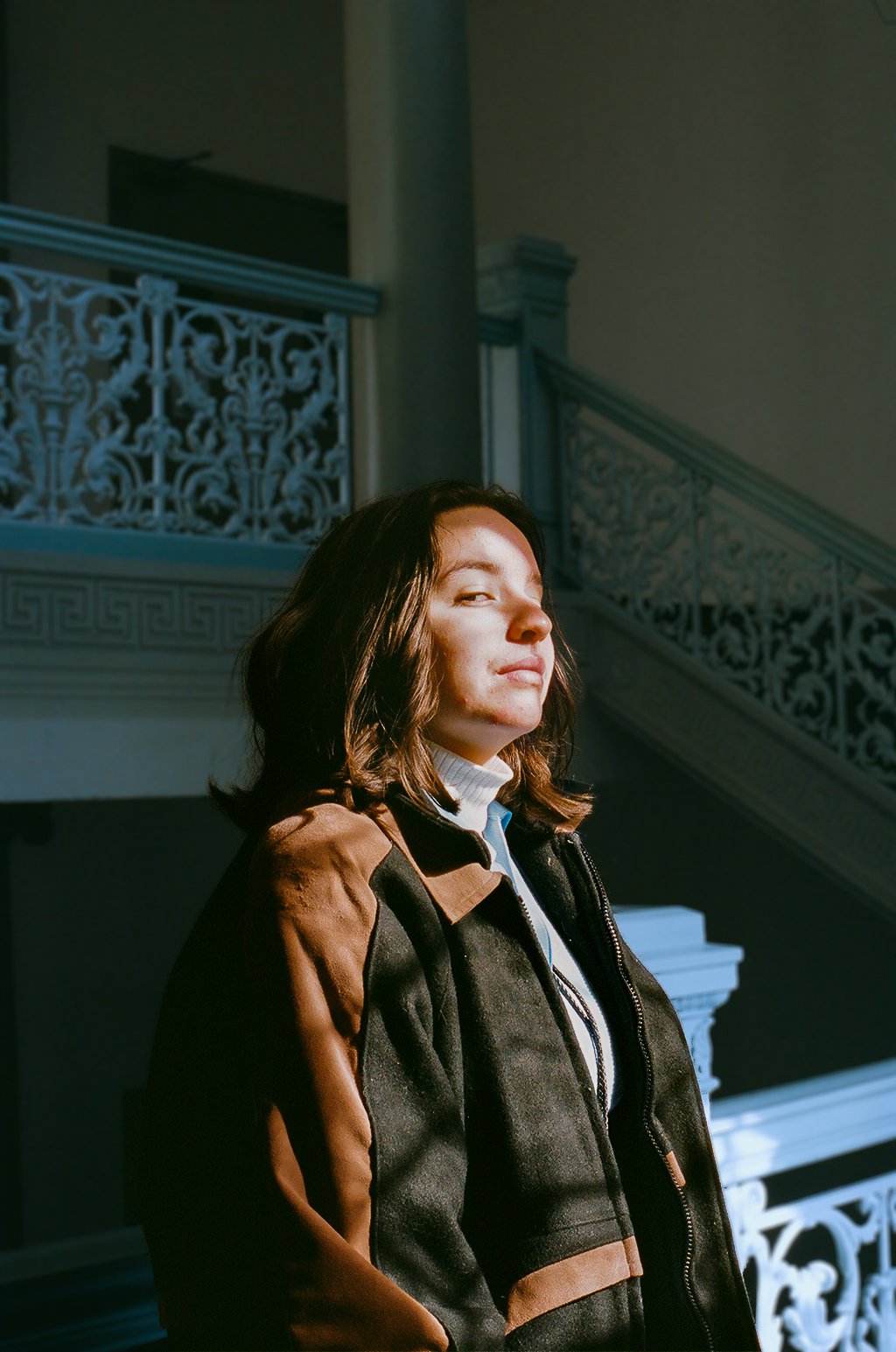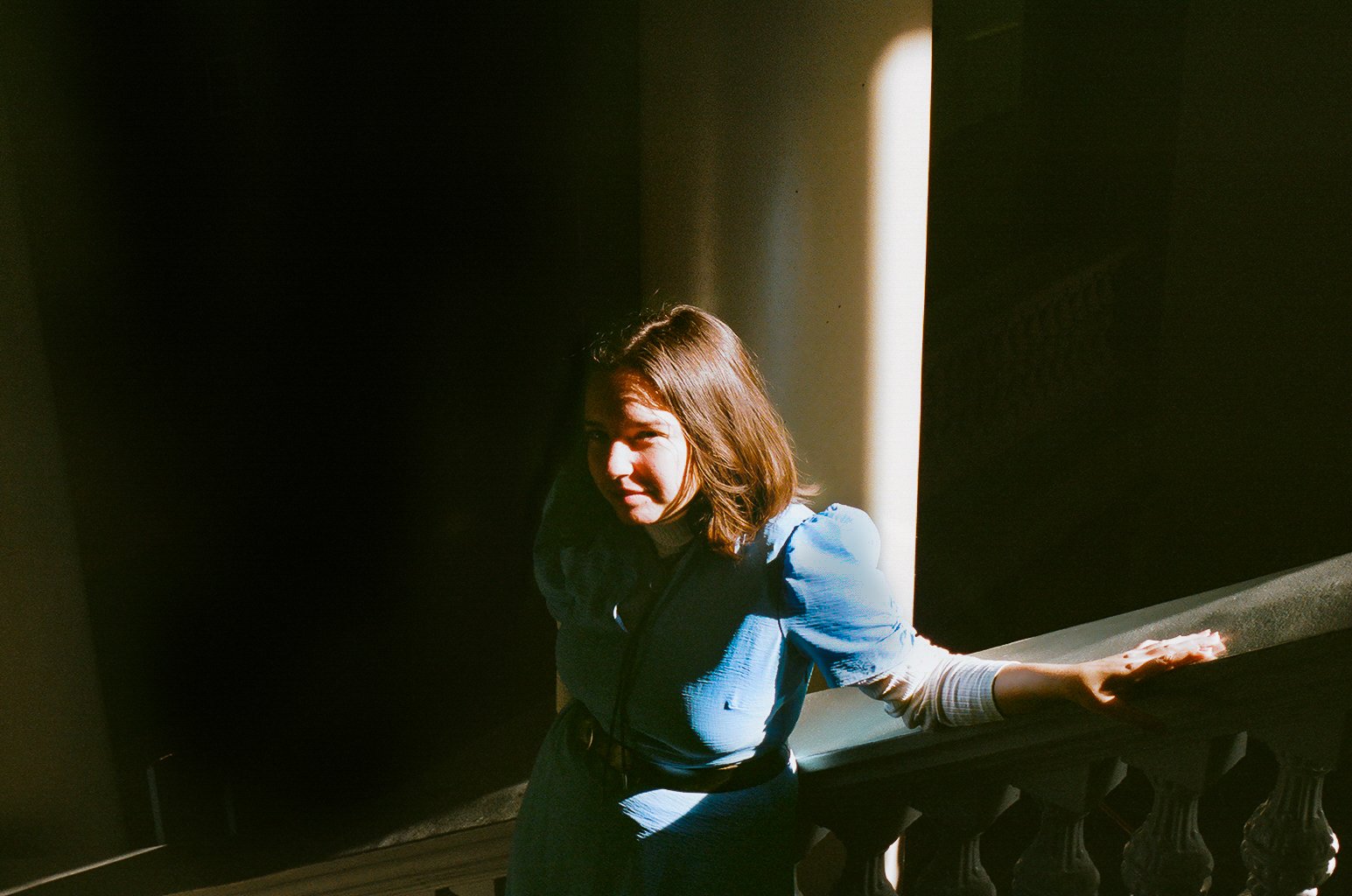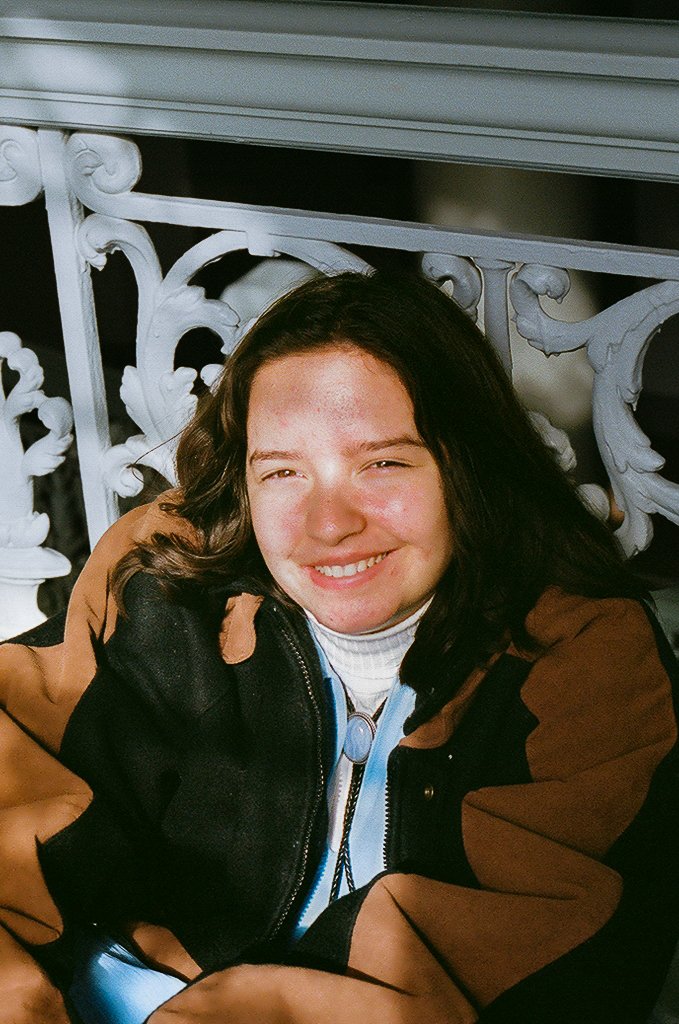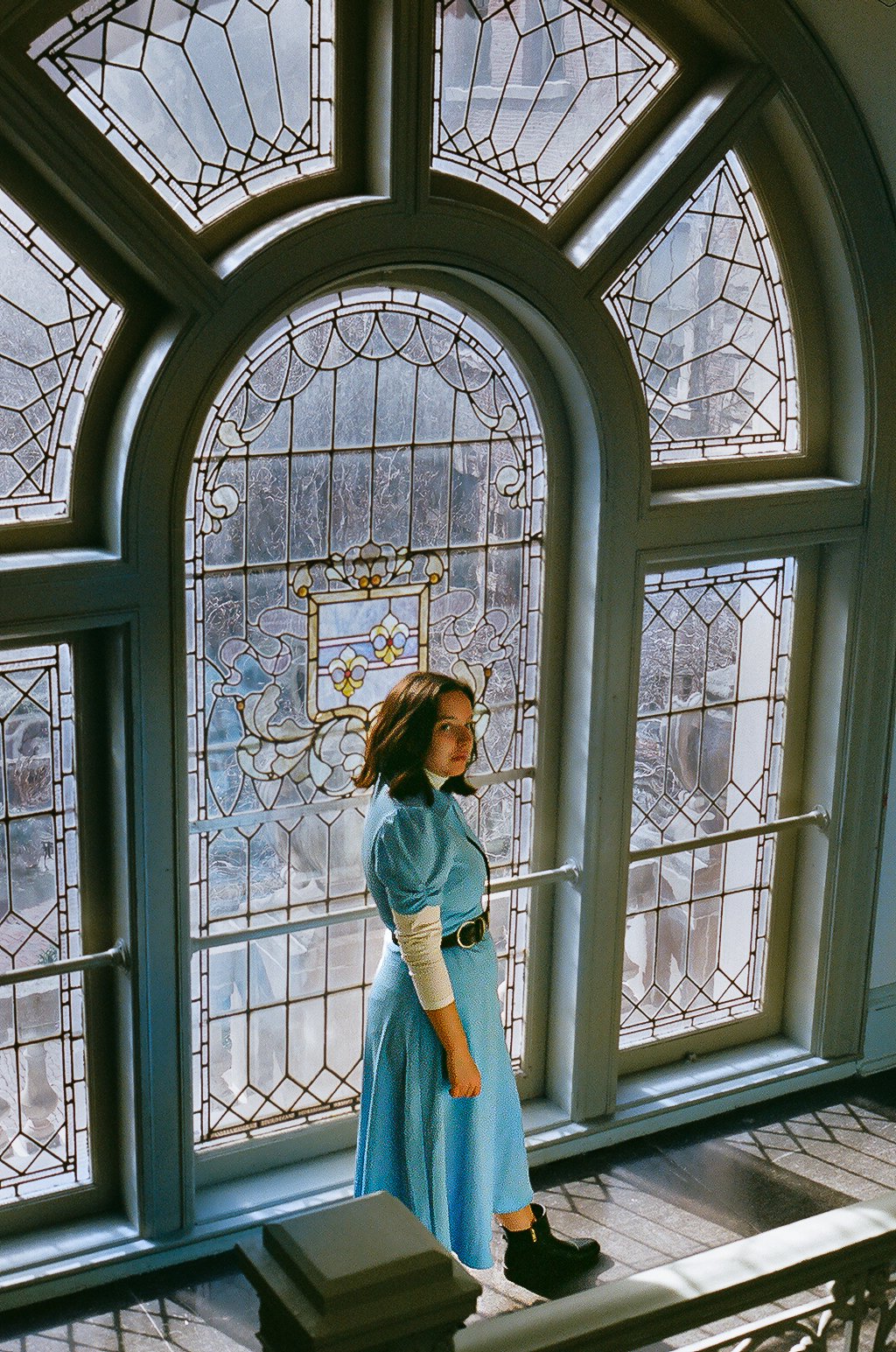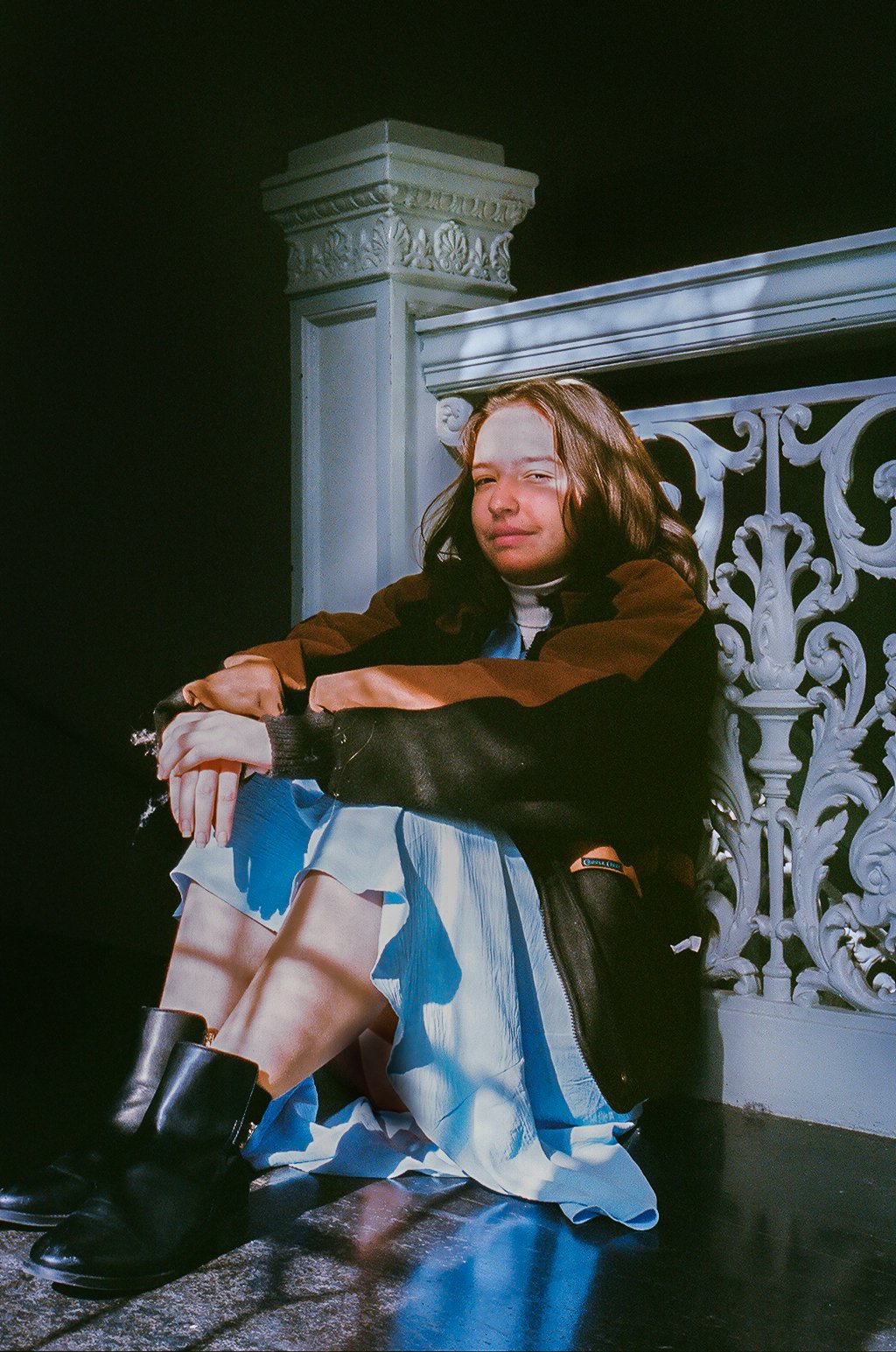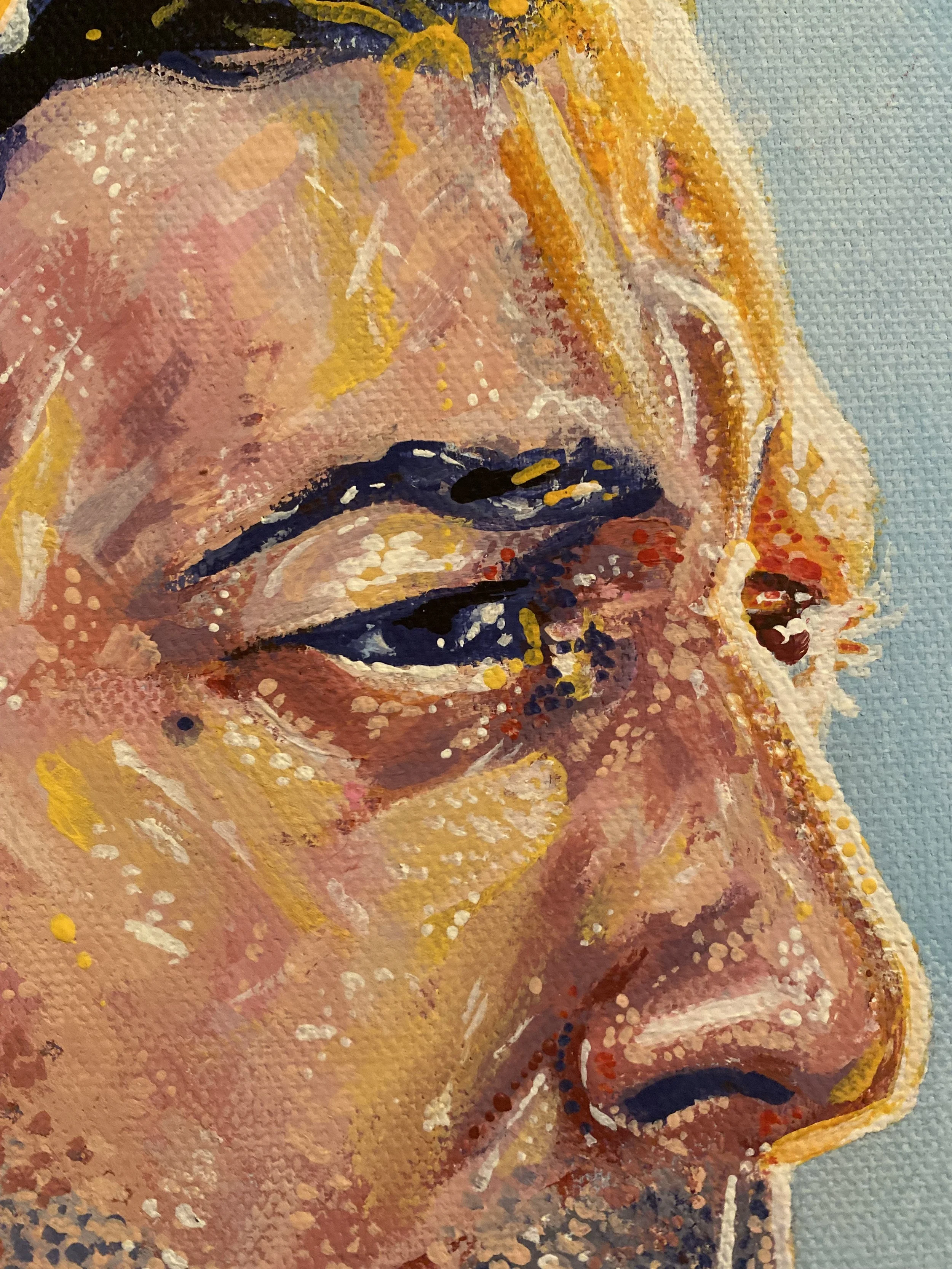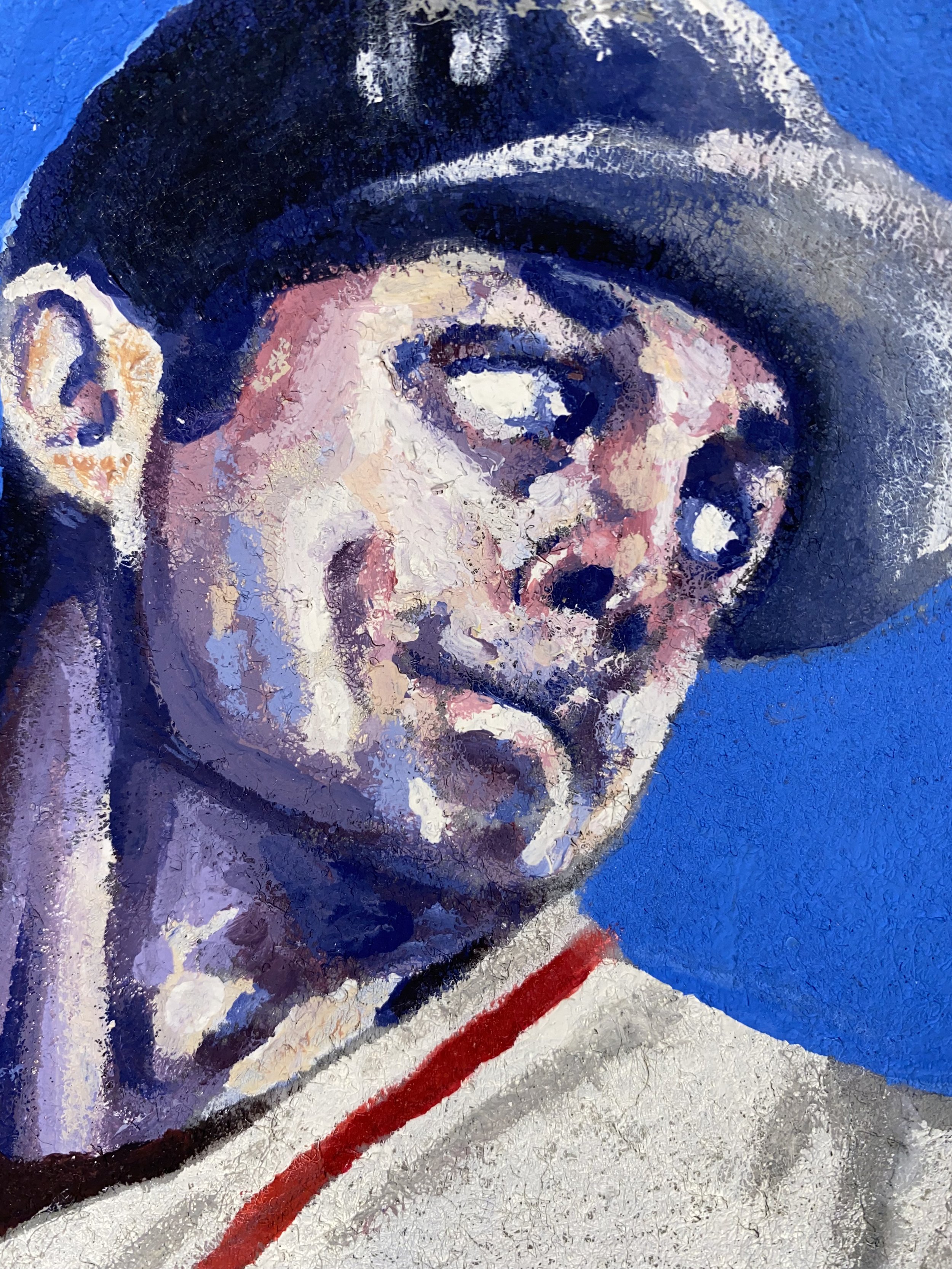Feature by Raunak Lally
Photos by Anais Mitelberg
Cadence Gonzales is a first-year at Barnard who primarily paints both using paint and digital media to create. She has been creating art since her school days and has playfully indexed her creative journey by who she has used as references for her colorful and intricate works.
Go ahead and introduce yourself!
I'm Cadence, I'm a Barnard first-year, I'm from New Mexico, and I'm planning on majoring in Political Science – and I do art, too!
Where would you say that your creative journey began? What drew you to creating portraiture and art in general?
I've been drawing since I was a little kid and it was all terrible. Absolutely terrible. There was no trace of talent anywhere. In seventh grade, it's really embarrassing – my art journey starts off with anime – so get ready for that. I was twelve, in my closet, tracing on my computer because I thought that it was a horrific thing to do, that I was tracing. I would go to school the next day and say "look at this! Look what I just did!"
Fast forward, over the course of four years, I was drawing little cartoons and I was getting more and more into comic style. I was using markers and pens, that's my bread and butter. I hadn’t painted – I think I’d only painted one time, and that was a very poorly done Stitch from Lilo & Stitch, an aggressively poorly done Stitch. I had taken AP Art, and the first time I did comic style, it was political commentary. I did well on the test, felt good about it. Then I took AP Drawing, so I just got to take the class again and still get the AP credit! I visited Washington D.C. with my family and went to the National Portrait Museum, where they have all the presidential portraits, and I was thinking about what my theme was going to be, so I said I would just try that, and, lo and behold, I did and it has literally changed my artistic journey forever - by just picking up a paintbrush and just seeing whatever the heck happens next. I absolutely loved the fact that it's been on my own terms and it's amazing for little kid Cadence, who struggled.I can take pride in that feeling of ‘oh we can create things now,’ and not just because other people like them but because it makes my brain feel good to see things coming together. It's been really awesome to start a new challenge and develop new skills along the way since I'm not formally trained.
Moving on from your school journey, during your time in college so far, has this current stage of your life influenced your work in any way?
I wish I was one of the really awesome artists I admire who can stick to themes, but I'm still figuring it out and I don't know if I'll ever have one. What I've really loved about school is being an illustrator for the Blue & White, so whatever they give me, I think to myself, "Okay, I guess I'll draw it for you – I'll do my best." This extracurricular involvement has actually allowed me to have more creative freedom, but I don't have space for all of my giant canvases and my 49¢ Michaels paint. Now I just have my tablet, and it's been expanding my horizons of digital media. There are all these things involved with digital art: there's layering and color gradients and I don't know what to do with that. I try to paint as I normally would, but digitally – which is beside the point of digital art, but I really love the progress that I've been able to make here, and it's been an amazing study break. I'll read 100 pages, theoretically I'll retain them, and then I'll paint for 3 hours.
Across your distinct works, when you decide on a subject for a painting, what might inspire you to choose that certain subject?
When I was in my AP Art era, my concentration was on my political role models, as politics are very intertwined into who I am, what I believe in, and what I want to do. That led to Stacey Abrams portraits, Ruth Bader Ginsberg portraits, John Lewis portraits, and I felt like I put more emotional coinage in those. Now, I am choosing things that I find challenging. I love a really good challenge, and love to 'struggle bus' through it, in the words of Trixie Mattel. I don't have any typical process, my stuff is all over the place, but it's good fun!
You mentioned that you also create digital art, which mediums do you work with?
I've primarily been using digital art, my comic book and anime art has made me pretty well-versed in pencil and ink. I've tried to get into gouache, but then my gouache set got absolutely ruined because I don't know how to take care of it, and then acrylic paint after that.
When you have a piece in your head, how do you go about selecting which medium to use to depict your vision since you have this broad range?
It's usually based on what's nearby and what's the least amount of effort! I could clean my gouache palette, but I won't.
I remember you speaking previously about having little to no knowledge of color theory before you got into art. Because of the striking nature of your works, is color theory something that you've taken into account when creating? If not, how do you go about deciding on the palette for a piece?
I still don't know color theory! Some of the magic would leave if I did. Color is very important to my work. I find that painting in grayscale is cool, but I don't feel it. I used this term in my application: I'm a very selfish painter – I really chase whatever makes my brain feel "wow, this is amazing, Cadence, I'm so proud of you, that's awesome!" So, when it comes to color, it's in the same vein. I'll look back at some of my timelapses of my digital art and it will be very two-toned greyscale with some values, but then my brain will just go "what if we put some nice blue in there?" That's where it comes from. I like it because there isn't any sort of rigid law that I have to abide by, but also it's just good recreational time for my brain to exercise and figure out which colors I want to choose, and it adds an abstract element to my art.
I love the term 'selfish painter!' Is there anything else that you would want anyone to think about when viewing your work or a type of impression you're trying to communicate, or is it purely something you create for self-pleasure?
In my AP Art era, it was definitely message-conveying and very summative of my relationship to the person I was painting, but also their relationship to history and the world around them. I'm very new to this—I’ve never had anyone interview me about my art, and I've never thought of myself as an artist. A lot of what I do is for me to say "look at where I've come from and look at where I am right now," and this is something that my brain created and I'm really happy about that, there’s this aspect of self-love that's involved. I also love the friendship aspect of creating for other people, and visualizing things for people that I really enjoy.
The portraiture you create is so amazing and detailed, do you view it as a form of replicating what you see if you're using a reference or specific subject, or, if not, how might your pieces differ from a reference?
I always start off with the reference. I've gone away from my tracing roots, even though I don't think tracing is a bad thing. I've moved away from my pencil sketch roots too, and gone straight into painting because the painting becomes – and this is going to sound so artsy and weird – but it becomes more living if you can shape it almost as if it's clay. There comes a point where shaping it to look like the reference and values is important, but then there comes a point where I don't care about that and it all comes into that free-flowing version of what my brain is interpreting. I see that something is being communicated there, but I'm not getting it through the values, so I ask "can I try red? That works there." From that point on, it goes into thinking about what other weird extra things I can add, such as way too many highlights or all of these weird lines around it. It's very experimental, and I can say that many of my paintings will not match the reference when they're done, whether that's because of proportion or color.
Is there anything style-wise or related to the process that you see tying your pieces together, even though many use distinct subjects? Do you see any stark differences that may set your pieces apart?
I use my zero-understanding of color theory as a crutch, hoping that everything will look synonymous and turn out okay. What that lends to all of my pieces is that there’s this foundation rooted in traditional art, colors, and values that are very underdeveloped compared to the reference. Then, what will come in, is something that unites all of my pieces - which is this messy, uncoordinated use of shapes and colors and brush textures that add a lot of character. Those additions are not only true to what I'm trying to communicate through my art – which is whatever the heck that is – but are also true to me, my personality, and how I view the world - because I chase joy! I chase fun stuff, I'm a selfish painter, but the way it communicates across my art is this interesting study, when you take a look back at all of them, in color, abstract lines, and how two colors work together, like blue and green or white or something weird. How does that form in my mind and make sense? Why does it do that? I don't know, but it looks cool!
Do your color palette or texture choices ever align with the subject within the piece, or is it a spontaneous decision? What might your planning process and the development of your inspiration look like?
I'll use my first ever painting as an example, which is my Joe Biden painting. I feel complicated about that being my first painting, and also my favorite painting; I'm not a Joe Biden hater but, I don't know about it, man. Anyways, the way I started that one was a process of trying to match colors as closely as possible, and matching that form to get to some sort of a traditional realist painting. Then there's a real process of giving up at some point or changing trajectories – that's a better term for it– where I just go crazy with it. Something that is not necessarily unique to me, but is a very core aspect of myself as an academic and an artist, is that I'm a major procrastinator. I have the weakest attention span ever in the world, so my paintings are done in sittings. My Joe Biden painting took four to six hours, and all my other paintings have to be done in one sitting too, otherwise I can't go back to them. When I have that sort of process, it's more of a battle with my mind and trying to figure out what makes sense, and figure out if I'm convincing myself that it makes sense or if it doesn't.There's just this balance between my foundations and understandings of realism and what things should look like, but also how my brain interprets it, and what I have on hand, and also what it is that I want to do. There's no distinct process. Sometimes I really crave and wish to have one, because I have portraiture, but then I also have more personal projects like the comics, because my foundations for art are in comics. Sometimes it can be a little frustrating when my art style is based on the sentiment 'let's go in and see what we can find out' and then four hours later, I'll have something. However, when you're doing something that's tight-knit like comics, I would prefer to have a sketch, then an inking, and then a color, but I can't get those done as easily, so it's an interesting journey.
On the comic process, do you also write the narrative or is it purely illustrative for you?
It's been a little passion project of mine since I was eight. Everyone always has that one story they had created when they were eight, and thinks 'this is my cool fantasy story that I made with my toys,' and I have had that in my brain forever. I'm really big on inner-child work, into chasing joy, and what baby Cadence would've wanted. Right now, they're just illustrations, but it's interesting with something that doesn't have a reference, like an original character that you came up with, then it's about how you communicate that with the rough and intangible image in your brain – it's difficult and it's something that I want to connect more into my art.
It's so interesting how your interest in politics is integral to your work, and that your first painting was of Joe Biden and you mentioned that there could be an intersection for you between art and politics. What do you think that combination looks like? s that something you're already incorporating into your art?
The easy answer is making political cartoons, and I did do that for a little bit. This is not going to be joint with politics at all, but fitting with the nature of me being a selfish painter, a lot of what I'm starting to get into with my painting – that is more than just a painting of Joe Biden – is an exploration of my feelings about him and his work, more of painting being an outlet. This sounds very basic, but straight-up expressing myself and also processing things, so I want to try understanding my feelings or my past through painting.
If you had to sum up your style or your art or anything to do with your creative process in one word, what would that be?
Disorganized!
Do you have any other projects coming up, either something you're planning or something you're working on?
I've been working on exploring color more. I've already explored color a lot, but I've really taken a turn from just working with traditional skin tones or texture, and being more abstract but hopefully not losing too much form. We'll see where it goes!

